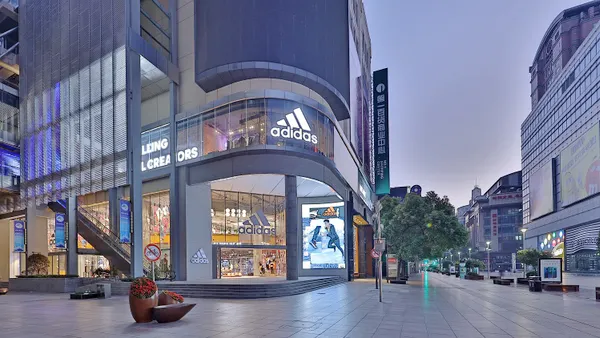Dive Brief:
- The department store retailers in recent quarters have been able to improve both their top-line sales and margins through better management of their inventory, as well as creating a seamless shopping experience for customers, according to a recent Moody's report emailed to Retail Dive.
- Analysts led by Christina Boni pointed to Kohl's fourth straight quarter of comparable sales increases, and also strong sales performances at Macy's and Nordstrom in recent quarters as evidence of sector improvement. During the same period, inventory levels at the stronger department stores have declined. At Kohl's inventory has fallen more than 6% each quarter since Q4 last year. At Macy's, inventories have fallen by more than 4% during four of the past five quarters. As a sector, inventories fell by 2.5% in Q4, 3.7% in Q1 and 1.6% in Q2, according to Moody's.
- But the trend is not universal among department stores. Boni described J.C. Penney, which Moody's downgraded after its Q2 earnings release, as "a significant laggard on inventory management."
Dive Insight:
Wall Street analysts in recent years have repeatedly drummed department stores for holding too much inventory in a world that is changing how it shops. It's not the products themselves investors despise, of course, but the discounting it takes to get rid of them if shopping is sluggish.
And, until recently, department store shopping was mostly sluggish, as the sector was caught unprepared for the expansion of digital, off-price and fast-fashion competitors. But the department store sector is starting to adapt, through a mix of strategies.
Boni points to Kohl's, which she notes can tailor its inventory and reduce commitments on a per store basis through a program 500-stores strong so far. The retailer has also sped up its product flow for its private brands and is rolling out ship-to-store, which "which will enhance consumer choices and should support a continued increase in online penetration," Boni said.
Nordstrom, meanwhile, is speeding up its supply chain, including through its local shops in L.A., which pool inventory rather than shelf it up at stores, Boni notes. Nordstrom also has the advantage of its successful off-price banner Rack, which can help it quickly clear inventory leftover from "fashion misses" at its full-line stores, Boni said.
During recent periods of reduced inventory and innovative strategies to manage it, merchandise margins have improved for the sector's leaders, namely Nordstrom, Kohl's and Macy's, according to the analysts.
And then there's J.C. Penney, which of late has struggled to find the right note on fashion and can't seem to decide whom it wants to serve. Boni noted Penney's attempts in previous quarters to "reset" its women's apparel offering — efforts that include major discounting to liquidate existing inventory. And Penney is not done discounting. Boni also pointed to the retailer's plans to liquidate yet more inventory this year as it "has struggled to pinpoint its customer base — a challenge that others in the sector have also had to address as the customer has become much savvier and exacting."














